Ecuador
Things to DO
Lower Río Napo
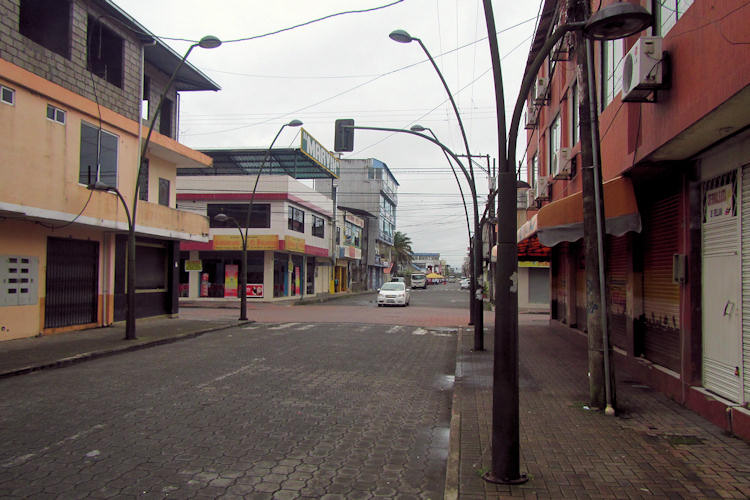 |
|||||
The unavoidable starting point for many of Ecuador's most fascinating jungle tours, Coca will be most visitor's
unsexy introduction to the Río Napo.
In the 1990's the town was transformed by the oil industry from a tiny river settlement with dirt roads into a hot, teeming mass of
concrete.
A stunning new suspension bridge now spans the Napo, taking traffic bound Via Auca towards Tiguino (another starting point for
rainforest forays).
The Río Napo flows east from Coca on a steady course toward the Amazon River in Peru. Just after Coca, the river widens
into a powerful waterway that can flood villages and islands.
This long, lonesome stretch of the Napo, running along the edge of Parque Nacional Yasuní, houses some of Ecuador's best
jungle lodges and boasts some of the country's better wildlife-spotting possibilities.
On the way there, you'll spot some of the oil development causing ongoing controversial headlines.
Sach Lodge
Enjoying a spectacular setting on the inland lake of Pilchecocha, a short hike and canoe ride from the Rïo Napo, Sacha Lodge is one of Ecuador's best jungle lodges. Opened in 1992, this Swiss-run place
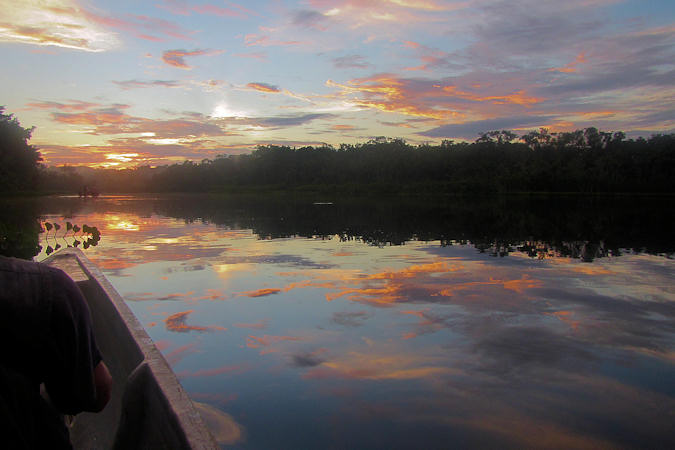 |
|||||
has never rested on it's laurels and offers
one of the most luxurious rainforest experiences possible.
As well as employing and training indigenous people to work in the tourism industry, Sacha has been steadily purchasing plots from
Ecuadorian smallholders who were using it to farm, and allowing the rainforest to reclaim the land purchased. The lodge sits on 5.000
acres of reclaimed land now fully protected for forestation, and is the largest private reserve in Ecuador.
The lodge's showpiece is a massive metal canopy walkway that stretches between three platforms, 60 m off the ground. Birdwatchers covet
the early morning experience of standing on the creaking giant to watch the fog lift on an array of avian and primate life.
A seperate 45 m high wooden observation deck atop a hudge ceiba tree is another way to get high up.
The 5.000 acres are visited by six kinds of monkey, toucans, poison dart frogs, sloths, anacondas, cainman and black agoutis.
Napo Wildlife Center
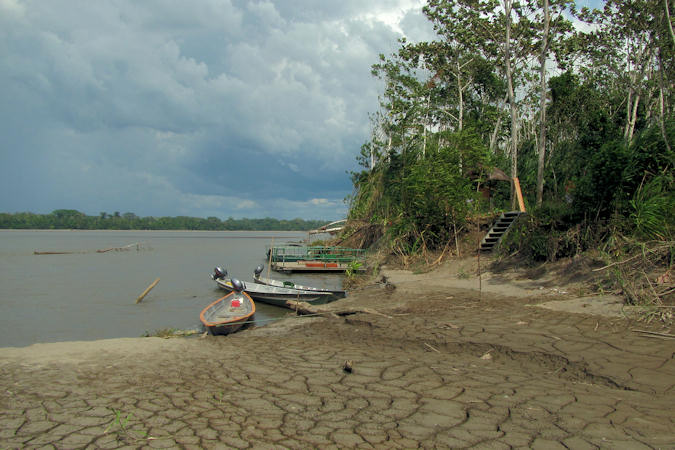 |
|||||
As the lodge most ensconced within Parque Nacional Yasuní, the sumptuous Napo Wildlife Center enjoys a pristine
setting with rarely paralleled access to wildlife.
This ecotourism project is 100% owned by Añagu's Kichwa community: they make up almost the entire lodge staff.
Trips are quided by local Añunga villagers trained as Yasuní park randgers and bilingual naturalist guides.
Two Parrot Clay Licks on the property are a major attraction for bird-watchers, who also come from surrounding lodges to see
parrots, parakeets and macaws. between late October and early April is the best time to see up to 10 species of parrot - somethimes
numbering in the thousands.
A short hike from the lodge, a 36 m steel tower offers a spectacular canaopy panorama and prolific birdlife.
The rare Zigzag Heron has been spotted on the property.
Cuenca
Cuenca’s history begins long before the arrival of both the Spanish and the Inca. The city was originally a Cañari
settlement called Guapondeleg and is believed to have been founded around 500 AD Guapondeleg translates into “land as big as
heaven”.
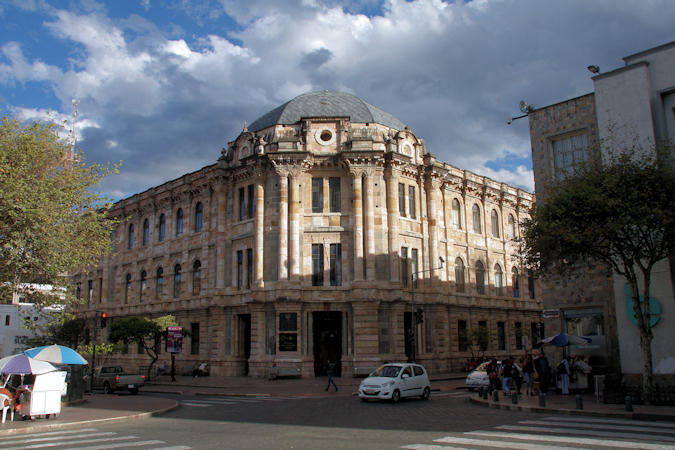 |
|||||
Less than half a century before the conquistadors landed, the Inca, after a bitter struggle, conquered the Cañari and
occupied Guapondeleg and the surrounding area.
Shortly after the defeat of the Cañari, the Inca commander, Tupac Yupanqui, ordered the construction of a grand city –
Pumapungo, “the door of the Puma” – whose magnificence was to challenge that of the Inca capital of Cuzco. Indigenous
people told the Spanish conquorers stories of golden temples and other such wonders, but by the time the Spaniards found the
legendary city of Pumapungo, all that remained were ruins, leaving the Spanish to wonder what happened to the fabled splendor and
riches of the second Inca capital.
After being abandoned by the Cañari and then the Inca, Cuenca was sparsely populated until the 1550’s. The Cuenca that exists today was
founded by the Spanish in 1557.
Marking the western edge of the historical center, Plaza de San Sebastián, Cuenca's most beautiful, is anchored by the
19th-century Iglesia de San Sebastián. It is unique in its asymmetrical structure, with a single tower on its right side. Parts of
the church date back to the early years of colonization, 1568, though the structure has seen many modifications over the past five
centuries.
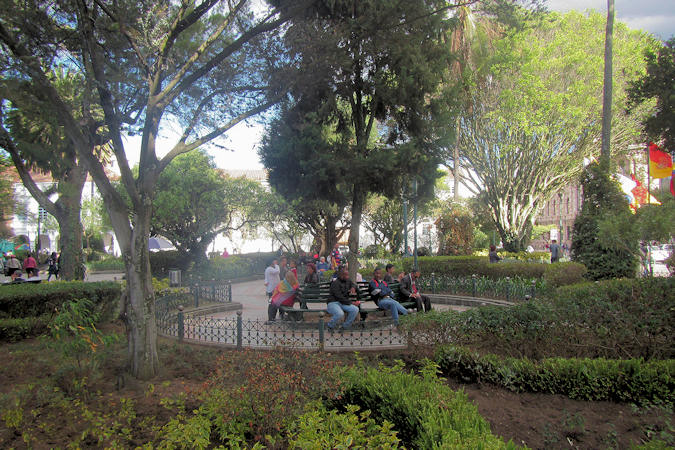 |
|||||
Parque Calderón – is the city’s main plaza and the spot around which Cuenca revolves. The park's name comes from independence
hero Abdón Calderón
The impressive New Cathedral (Catedral de la Inmaculada) and its huge blue domes dominate the plaza.
The plan of the Cathedral was drawn up by Juan Bautista Stiehle (1829-1899) — a German-born friar who arrived in Cuenca from
Alsace in 1873 — on suggestions made by Bishop León Garrido.
The Cathedral took over the function of the nearby Old Cathedral that had become too small. Construction works started in 1885 and
lasted for almost a century.
This building combines many architecture styles, but Romanesque Revival is predominant. The cathedral is surmounted by
three giant domes covered by striking blue and white glazed tile from Czechoslovakia. The stained glass windows were created by a
Spanish artist and made with antique glass that came from France.
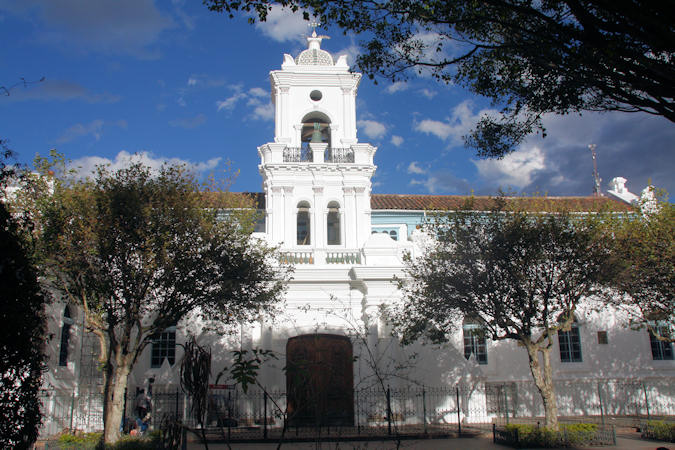 |
|||||
On the opposite side of the plaza is the Old Cathedral (Iglesia del Sagrario). Construction of the El Sagrario began in 1557,
the year Cuenca was founded and washe main place of Spanish worship during the time of Spanish colonization in Cuenca. It functions
today as the Museum for Religious Art.
Santuario Mariano del Carmen de la Asunción was founded in 1682 and is also known for its monastery. Located off of the
Plaza de las Flores, which hosts the popular Cuencan flower market, this church is marvelously preserved down to the gold-colored
pulpit, and contains religious art as well as the Virgin Carmen, located at the front of the church.
On the east end of the historical center Parque San Blas has one of the city's largest churches, the Iglesia de San Blas
It's the only Cuenca church built in the form of a Latin cross. Its first stone was laid in 1557
Parque Nacional Cajas
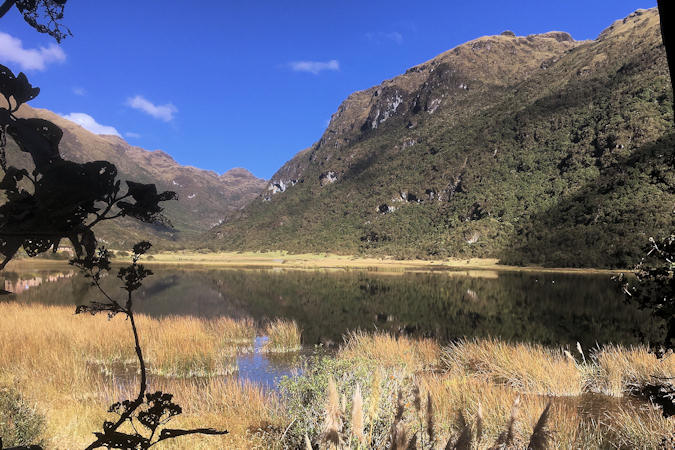 |
|||||
The parkname Cajas comes from caxas, the Kichwa word for cold. And cold it is ... so cold that, getting lost, which
is easy to do, is a rather dangerous proposition. Night temperatures can drop below freezing, especially in the dry season. Driest months
are August to January, but it can rain anytime. Altitudes within the park vary between 3.000 m. and 4.3000 m.
This extremely wet and foggy area is considered a major conservation area for birds, mammals and flora: in fact, this is the most
biologically diverse portion of páramo in the entire Andes range.
Especially important are small forests of Polylepis trees that are found in sheltered hollows and natural depressions. Polylepis trees
have adapted to grow at higher elevations than almost any other tree in the world, making this one of the highest forest on earth.
The main recreational areas; all at scenic lakes, lie along the Cuenca-Molleturo road:Laguna Llaviucu and Laguna Toreadora.
Guayaquil
Between 1535 and 1547, a number of Spaniards attempted to establish settlements in the location of present-day Guayaquil. Fierce coastal Indians foiled all but the last; Francisco Orellana defeated the local tribes and officially founded the city of Guayaquil in 1547.
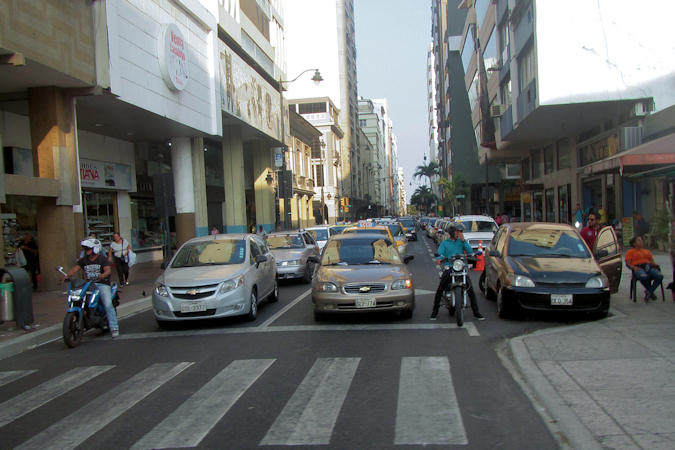 |
|||||
The city was an important port and ship-building center for the Spanish, but it was plaqued by pirate attacks and several devastating
fires, including one in 1896 - known as the Great Fire - in which huge parts of the city were simply burned to ground,
Iglesia San Francisco was first built in the 17th century as a Franciscan convent made entirely from wood. It then
suffered from a fire and renovation after renovation until it was decided that it should be rebuilt with reinforced concrete in 1932,
finally, preventing it from going up in flames again. What is surprising is that today it still stands strong and it can be admired for
its Neogothic Style architecture which is easily recognised by the main entrance with a semicircular arch, its two towers with
square bases and domes with green mosaics.
Parque Seminario was built 1868; The equestrian statue of Simón Bolívar is located in the center of the park.
The park is better known as Parque de las Iguanas for the large population of iguanas in the place.
Bosque Protector Cerro Blanco
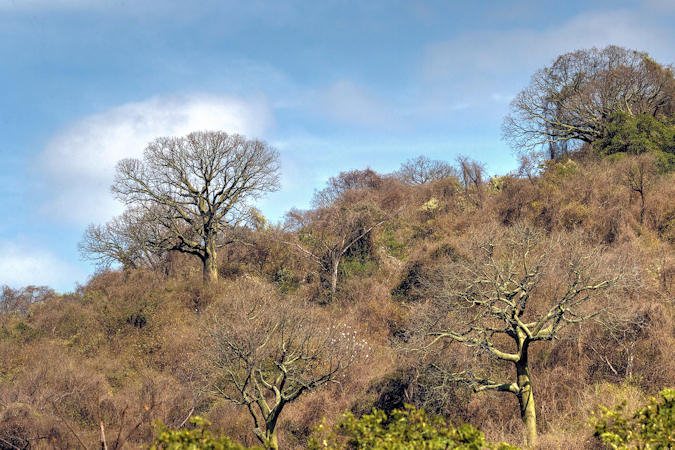 |
|||||
At only 30 kilometres from the centre of Guayaquil, you can find the lush Bosque Protector Cerro Blanco, one of the best
examples of a preserved tropical dry forest in the country.
Cerro Blanco is administered by the Fundacion Pro-Bosque (Pro-Forest Foundation), and protects 5.000 hectares of dry tropical
forest outside of Guayaquil.
Cerro Blanco includes a mosaic of vegetation from abandoned pasturelands to primary forest, amidst rolling hills and narrow ravines.
The Bosque Protector Cerro Blanco is rich with bio-diversity and one of the few remaining areas of protected coastal forest in Ecuador.
An estimated 600 plant species are found in the reserve along with 33 recorded mammal species, including monkeys, white-tailed deer,
jaguar, and puma.
A conservation center was recently opened and has a series of exhibits on dry tropical forests as well as an herbarium.
Reserva Ecológica Manglares Churute
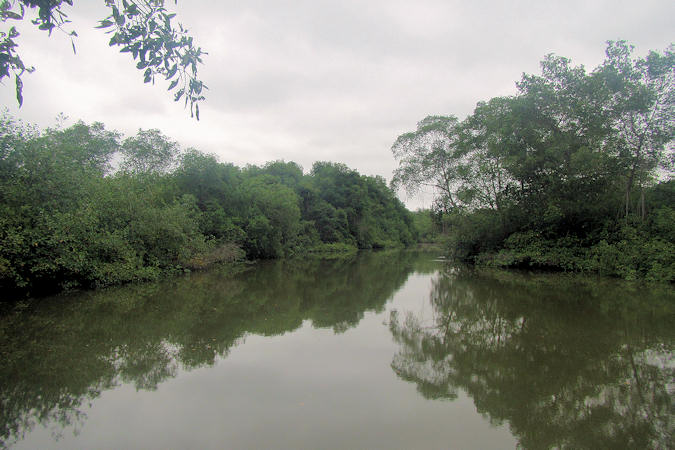 |
|||||
Reserva Ecológica Manglares Churute protects one of the few remaining coastal mangrove forests. It was created in 1979 due
to the increasing pressure on the forest by shrimp farms.
The mangrove swamps boast rich and diverse marine fauna and the trees are essential for the breeding and protection of hundreds of fish,
mollusk, and crustacean species. In the Reserve you can find tropical dry forest and a 3.25 m deep lagoon that covers over 1.000 hectares
and contains astonishing vegetation and fauna.
Due to human activity fauna species have been considerably reduced, yet in spite of that, dolphins are still frequently reported.
This lesser known region is rarely visited, resulting in an inefficient tourism infrastructure. Nevertheless, park rangers can assist
in arranging boat trips to the mangroves for interested visitors.
The entrance is located on the Guayaquil-Machala highway, approximately 56 km south of Guayaquil and there is an entrance fee.